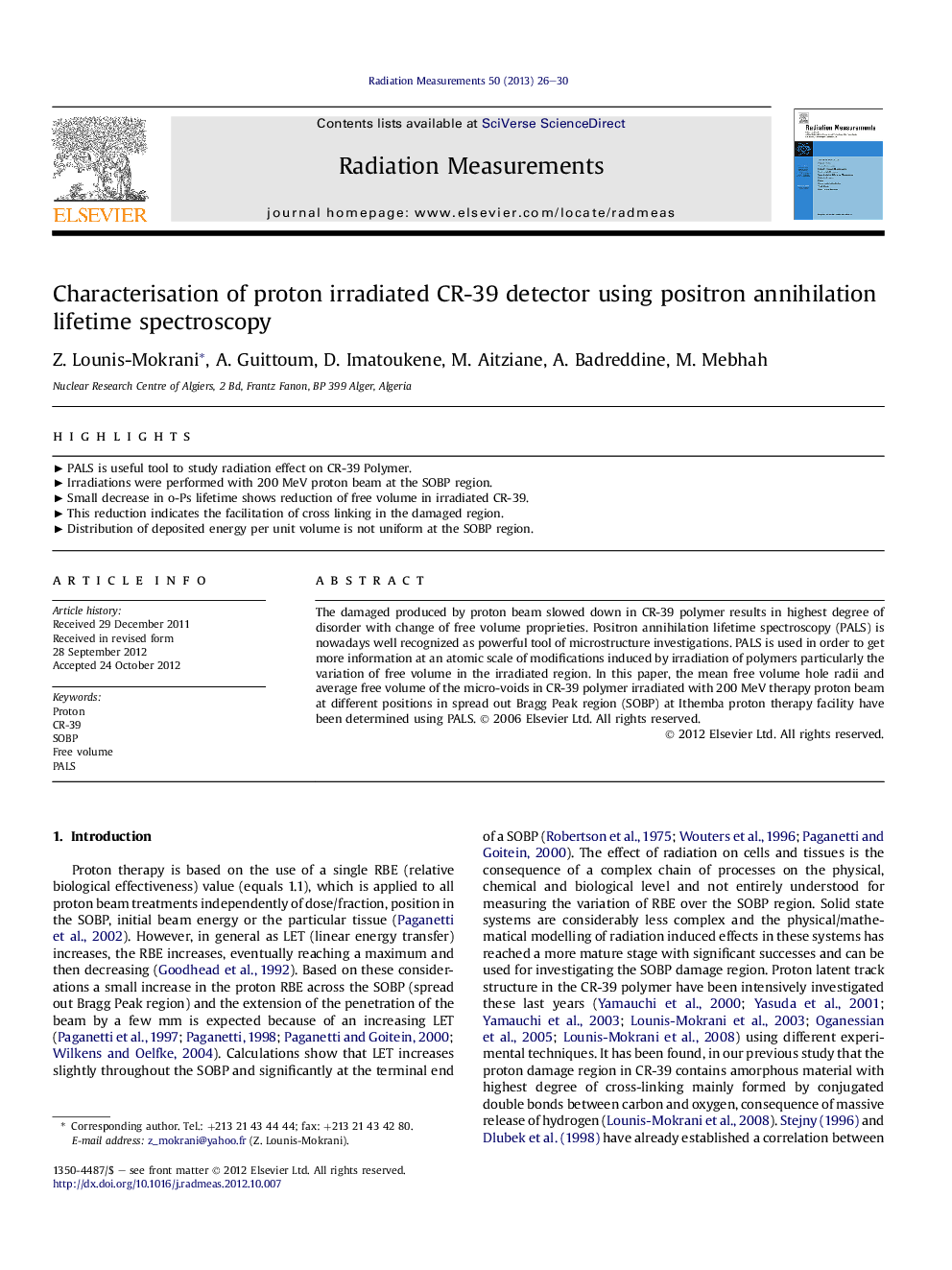| Article ID | Journal | Published Year | Pages | File Type |
|---|---|---|---|---|
| 1885046 | Radiation Measurements | 2013 | 5 Pages |
The damaged produced by proton beam slowed down in CR-39 polymer results in highest degree of disorder with change of free volume proprieties. Positron annihilation lifetime spectroscopy (PALS) is nowadays well recognized as powerful tool of microstructure investigations. PALS is used in order to get more information at an atomic scale of modifications induced by irradiation of polymers particularly the variation of free volume in the irradiated region. In this paper, the mean free volume hole radii and average free volume of the micro-voids in CR-39 polymer irradiated with 200 MeV therapy proton beam at different positions in spread out Bragg Peak region (SOBP) at Ithemba proton therapy facility have been determined using PALS. © 2006 Elsevier Ltd. All rights reserved.
► PALS is useful tool to study radiation effect on CR-39 Polymer. ► Irradiations were performed with 200 MeV proton beam at the SOBP region. ► Small decrease in o-Ps lifetime shows reduction of free volume in irradiated CR-39. ► This reduction indicates the facilitation of cross linking in the damaged region. ► Distribution of deposited energy per unit volume is not uniform at the SOBP region.
